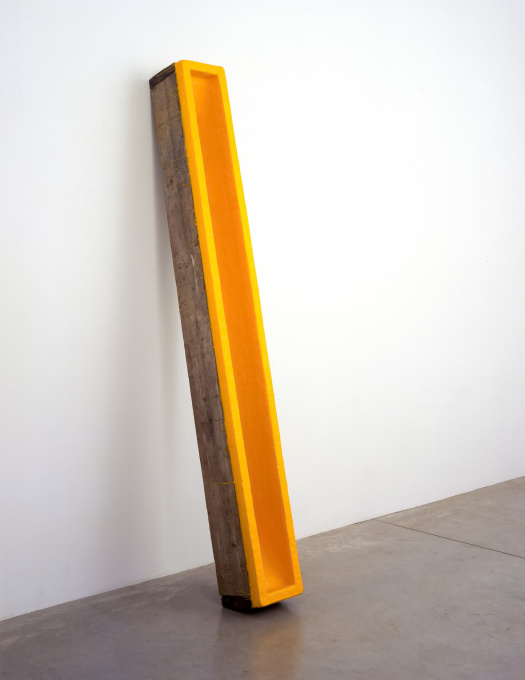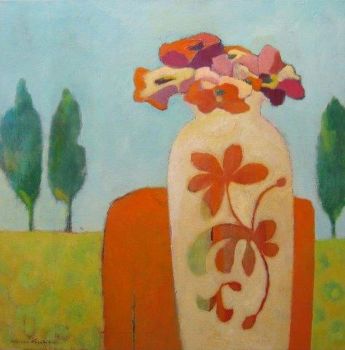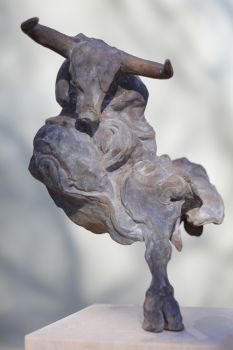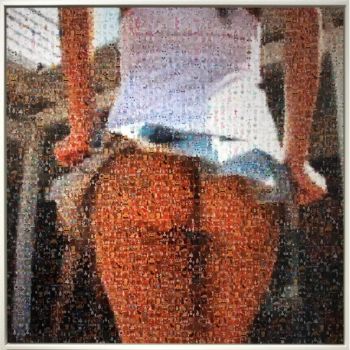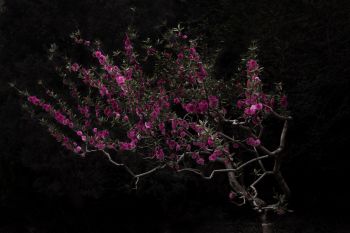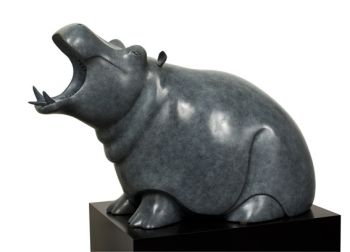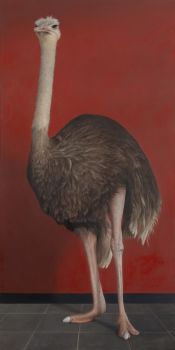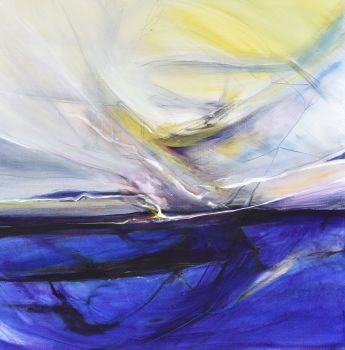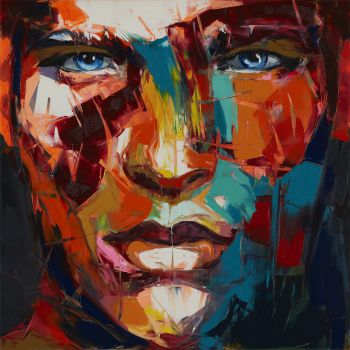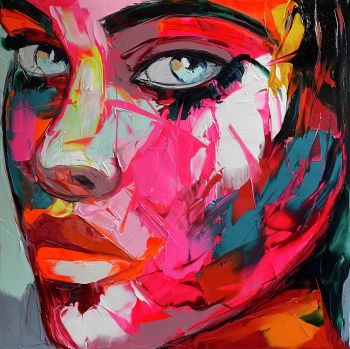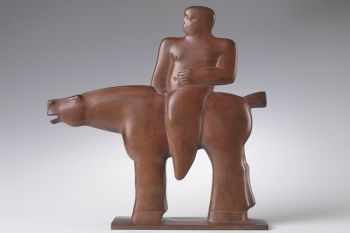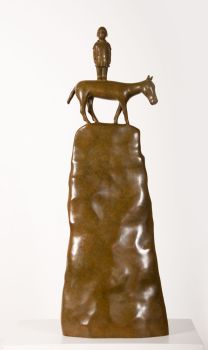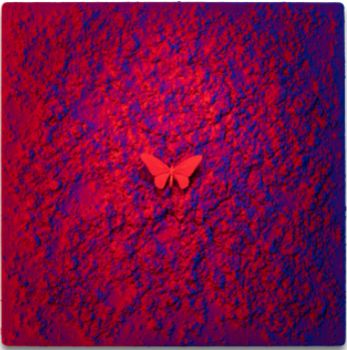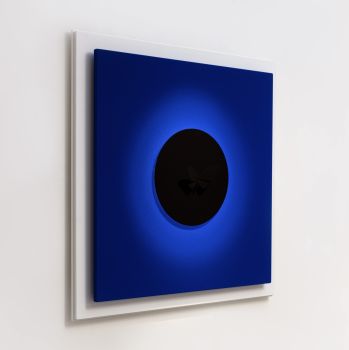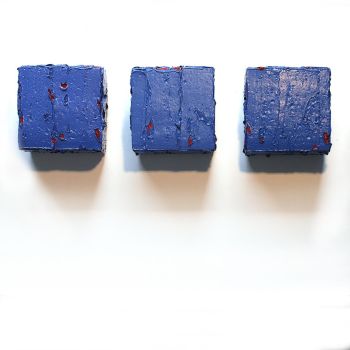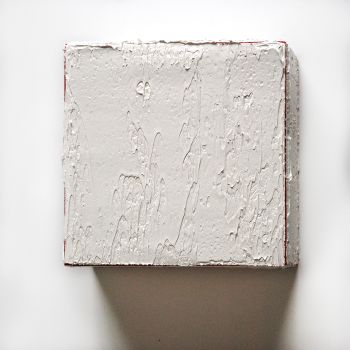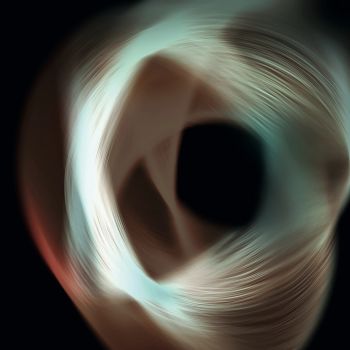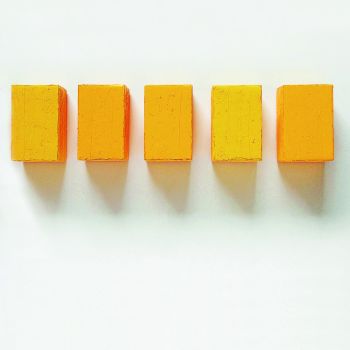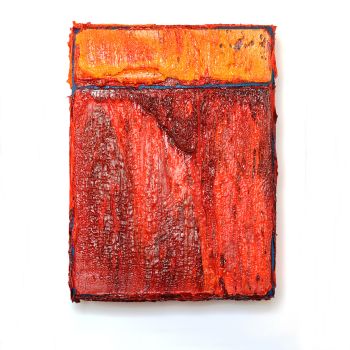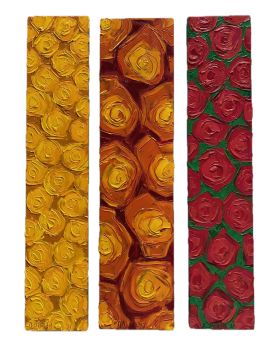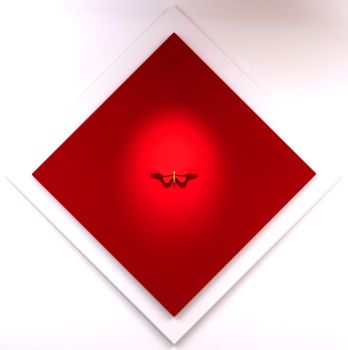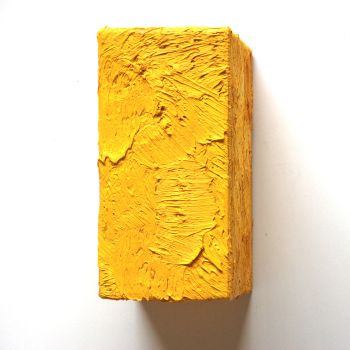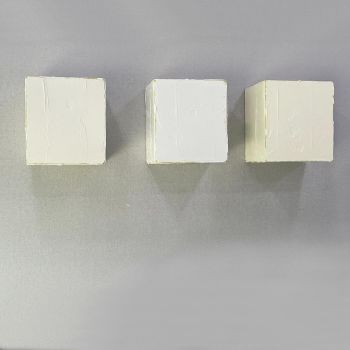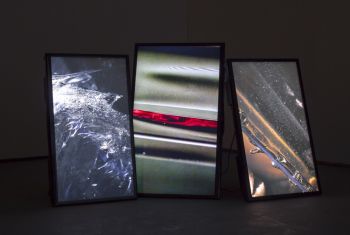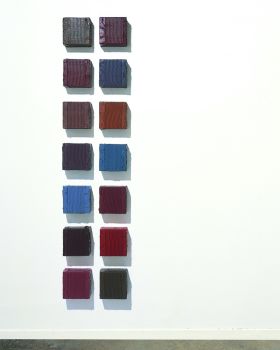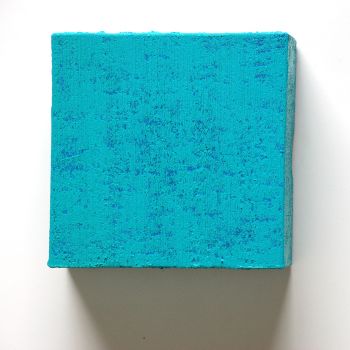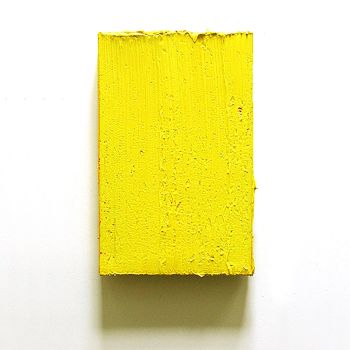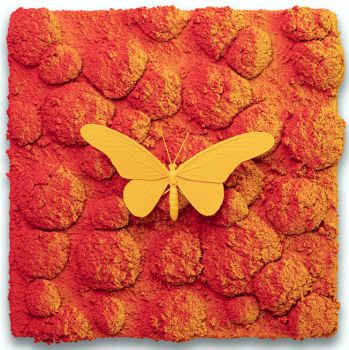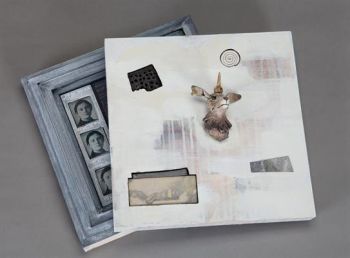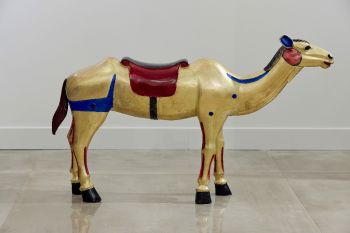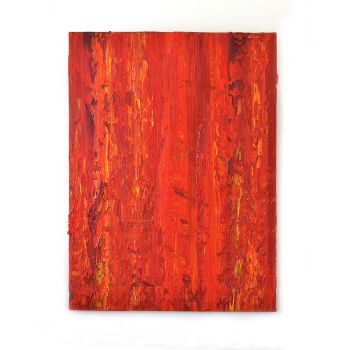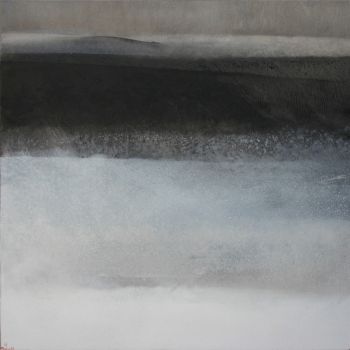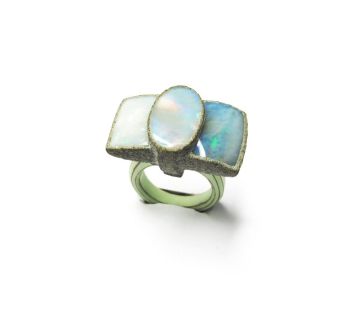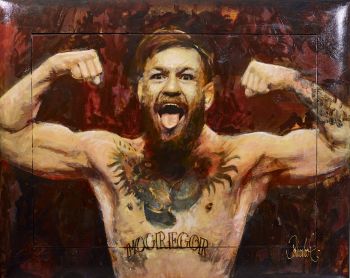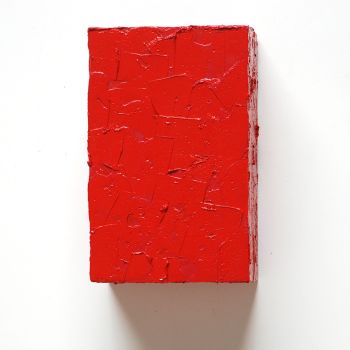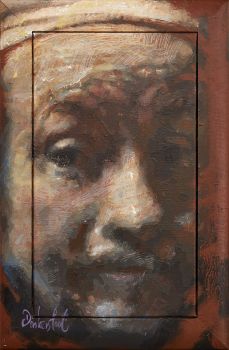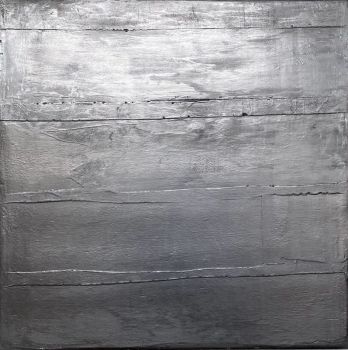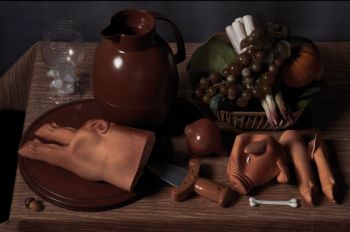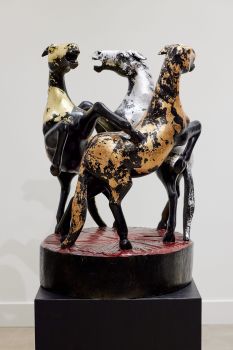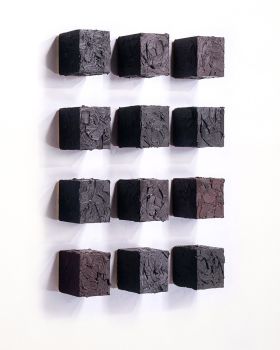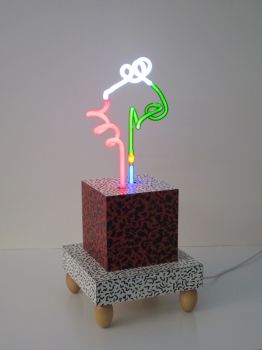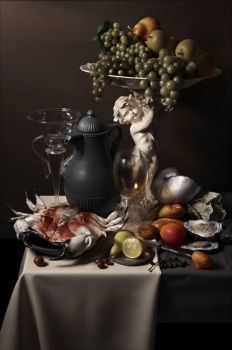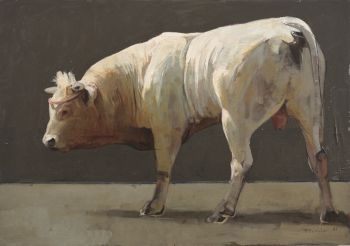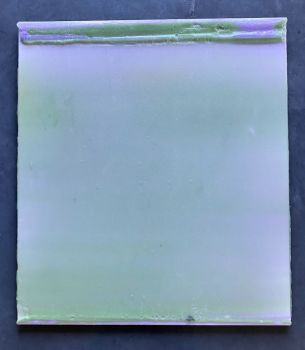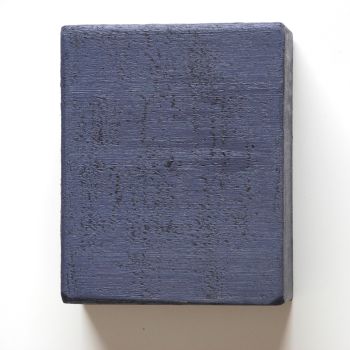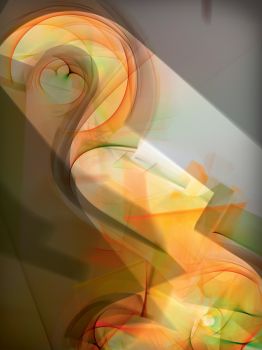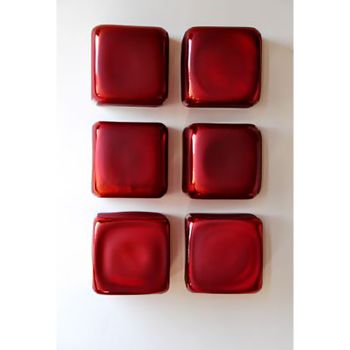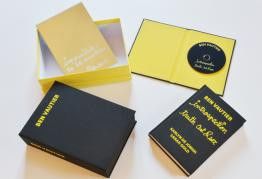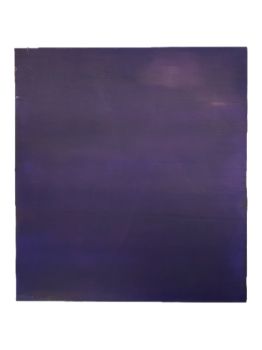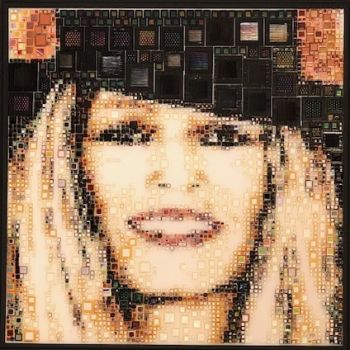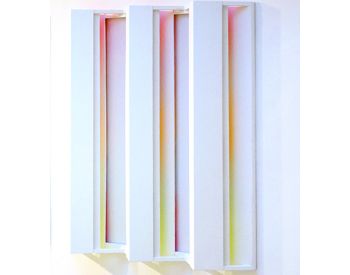Troug- Cadmium Yellow Deep 2003
JOHANNES GIRARDONI
WoodWaxBees Wax
254 ⨯ 28 ⨯ 55 cm
ConditionNeeds restoration
€ 5.000
Gallerease Selected
- About the artworkExhibited in Museum Ludwig 2005
Part of Series 2003–2011, Beeswax, pigment, wood
Light Reactive Organic Sculptures comprise an extensive body of work that has evolved over the past two decades. The work focuses on reductive investigations at the intersection of sculpture and painting, and explores the continuously shifting relationship between light and material. Despite an elemental material vocabulary — found wood, beeswax, and pigment — the work’s physical constellation becomes both the carrier of an explicitly painterly event, while also being the foundation of an immaterial phenomenon. The pieces are often examinations of phenomenological processes, where a hollow or empty space — a tangible emptiness — turns out to be the actual center of the work. Opposites and contradictions, as well as the complex dialectic between them, are the fundamental themes. The orchestration of material and light, presence and absence, things found and things formed, all resist clear fixation, thereby maintaining and creating works with their own non-derivable reality.
The primary material organization is found wood that forms the base for color built with pigment and beeswax. The wood is harvested from urban debris at building constructions and deconstructions, and in its worn and deteriorated condition, creates an instant history. These structures become the foundation for an architecture of color in which the material is color, and the color is material. Built by suspending varying degrees of pigment in layer over thin layer of beeswax, light travels into the wax and encircles the pigment. This results in light reactivity, and juxtaposed to the static, aged structure of the wood, the sculptures’ pigmented wax evolves and adapts to changing ambient light situations. These sculptures hold light.
"Girardoni’s use of wax, influenced by Jasper John’s paintings with encaustic — such as Flag and Target — and related to Brice Marden’s use of the material in his opaque, monochrome pictures from the 1960s, ultimately led the artist to sculptural procedures: “Wax catalyzed the move away from ‘painting’ … The beeswax allowed me to ‘build’ color.” Girardoni prefers using wooden slats, boards, or parts of wooden beams as construction material, where traces of their use have been recorded. To this the artist applies the material color — pigmented wax. Through their ready-made character the artist instills a uniqueness and reference to life in the objects. At first glance, the works, which are oriented towards geometric forms and series, seem like minimalist art in the succession of Carl Andre, Sol LeWit and Donald Judd. The major difference in Girardoni’s works, however, is that they have an organic and human atmosphere, while the cubes, fences and plates, due to their industrial production, emanate coolness. (…) Even though Girardoni leaves both the inner and outer panels abstract, he is nevertheless concerned with a contemplative experience, and not solely with a matter-of- fact inventory of color, material, and structure. Joseph Beuys had attributed beeswax a symbolic-spiritual function, that of warmth and energy. These may also be experienced in Girardoni’s objects, paired with painterly, coloristic, and tactile qualities".
– Florian Steininger - About the artist
Johannes Girardoni, an Austrian-American artist born in 1967, is known for his captivating fusion of digital and analog media and has left an indelible mark in the fields of sculpture and installation art. From intricate, delicate creations to expansive, interactive light wonders, Girardoni's artistic repertoire spans a breathtaking spectrum.
Growing up in a picturesque village near Vienna, Girardoni's creative journey crossed continents when he moved to California with his family in 1982 at the tender age of fourteen. His formative years at Bowdoin College in Maine from 1985 to 1989, where he double majored in history and art, laid the foundation for his artistic odyssey. During his tenure at Bowdoin, Girardoni honed his craft as a visiting artist at the renowned MIT Media Lab.
Girardoni's artistic development from two-dimensional to three-dimensional expression reflects his preference for experimentation. Influenced by the hot wax painting techniques of greats such as Brice Marden and Jasper Johns, his work embodies a captivating interplay of formal contrasts.
The world became aware of Girardoni's ingenuity when he presented his first exhibition in New York in 1991, propelled by the astute eye of art curator Friedhelm Mennekes. Over the years, Girardoni's artistic footprint expanded worldwide, with notable exhibitions such as the exhibition "Personal Structures" at the Ludwig Museum, Germany, in 2005 and participation in the exhibition "Origins" organized by the Hudson Valley Center for Contemporary Art in Peekskill, New York, was sponsored.
One of Girardoni's groundbreaking contributions is the concept of "Refrequenced Sculpture", which is expressed in his 2009 installation "7 Minutes 20 Seconds" in the exhibition "Creative Migration" at the Austrian Cultural Forum in New York. His major work “The (Dis)appearance of Everything,” presented at the 54th Venice Biennale in 2011, seamlessly combines light and sound to create an immersive, interactive experience.
In 2013, Girardoni presented a fascinating presentation entitled "Off and On" at Nye & Brown in Los Angeles, California, which featured avant-garde installations that transform light and sound using cutting-edge technology. In particular, his 2018 survey exhibition at Levy Gorvy London entitled "Sensing Singularity" featured the groundbreaking installation "Metaspace V3", a testament to Girardoni's pioneering spirit in integrating software-driven elements into human interaction.
His notable works include “The Infinite Room,” a monumental sculpture in Washington State, and “Spectral Bridge,” an architectural marvel that adorns the Spectral Bridge House in Venice, California, as testaments to Girardoni's artistic prowess. A tome entitled Johannes Girardoni published in 2007 provides a comprehensive look at his artistic journey, while its inclusion in the prestigious collections of institutions such as the Fogg Museum at Harvard University and the Museum Ludwig in Cologne, Germany, underscores his enduring legacy .
Girardoni's outstanding contributions have received recognition, culminating in awards such as the prestigious Francis J. Greenburger Award in 2019. Critics and connoisseurs alike have praised Girardoni's work for its impressive resonance and innovative fusion of media. From the lush landscapes of Hungary to the bustling streets of New York, Girardoni's art transcends boundaries and invites the viewer on a transcendent journey of exploration and introspection.
Are you interested in buying this artwork?
Artwork details
Related artworks
- 1 - 4 / 24
- 1 - 4 / 24
- 1 - 4 / 24
- 1 - 4 / 12

